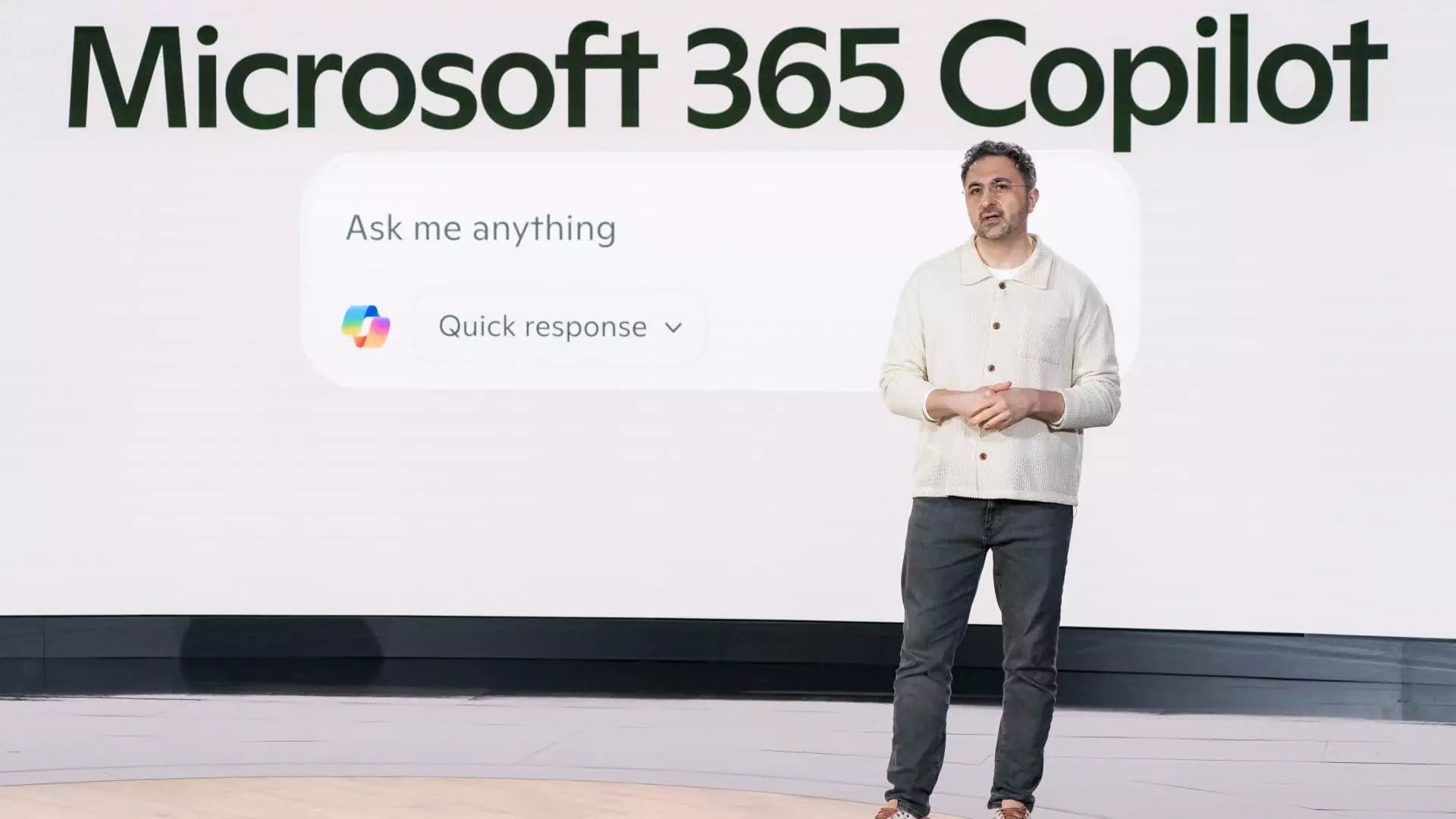In the often tumultuous world of artificial intelligence, where cutting-edge technologies constantly vie for dominance, Microsoft appears to be taking a contrarian approach. While competitors race to unveil the latest and greatest models, Microsoft opts for a more calculated strategy, as highlighted by Mustafa Suleyman, the CEO of AI at Microsoft. He emphasizes the value of what he calls “off-frontier” development — prioritizing the opportunity to learn from the advancements of others instead of diving headlong into the fray.
This strategy raises eyebrows in a sector typically obsessed with being first. When the major players, including Google, Amazon, and Facebook, are invigorated by a race to be the most groundbreaking, why is Microsoft choosing to lag behind? Suleyman asserts that waiting for just a few months to digest the nuances of leading-edge AI models presents advantageous opportunities to refine products and reduce costs. This method seems counterintuitive but is rooted in a sensible pragmatism — focusing on specific applications rather than attempting to formulate the most glamorous innovation.
Economic Considerations in AI Development
The harsh reality of developing sophisticated AI models is the substantial financial burden involved. Suleyman makes a compelling point: by choosing to operate as a follower — albeit a very strategic one — Microsoft can better allocate its resources. Developing a distinctly unique and advanced AI model requires not just considerable financial backing but also extensive computational resources and expertise. By remaining a couple of steps behind, Microsoft can witness the successes and failures of its predecessors, effectively mitigating risks associated with untested innovations.
Moreover, the financial pragmatism inherent in this strategy reflects a broader economic reality. Organizations need to justify their investments in technology against increasingly scrutinized budgets, so adopting a more calculated path can equate to lower costs. It’s akin to navigating a treacherous financial landscape while others blaze the trail, only to risk costly setbacks.
The Power of Collaboration and Relationships
Microsoft’s path also underscores the importance of collaboration in an ecosystem that is rapidly evolving. Their synergistic relationship with OpenAI exemplifies the broader trend of reliance on partnerships as companies seek to stay relevant without bearing the brunt of costly innovations alone. As Suleyman noted, the timeline of Microsoft’s investments indicates a willingness to grow through collaboration rather than competition — a stark contrast to the aggressive posturing that defines much of the tech industry’s landscape.
However, the increasing intricacies of these partnerships paint a more complex narrative. As Microsoft recognized OpenAI as a competitor, the glimmers of a power struggle began to surface, hinting that relationships in this sector can be painfully fleeting. Coupled with the announcement of Oracle’s project with OpenAI, the strategic nuances of collaboration become muddled, showcasing an industry often characterized by both interdependence and competition.
The Implications for Microsoft’s Future in AI
Microsoft’s emphasis on incremental innovation raises pertinent questions about its long-term aspirations in the AI sector. While the pragmatic approach may yield immediate financial benefits and manageable risks, the overarching concern is whether it places Microsoft at a disadvantage in a fast-paced technological era. The tech world is not merely about surviving momentarily but thriving with foresight and vision.
Suleyman’s comments exhibit a confidence rooted in Microsoft’s capabilities, underscored by its significant financial backing and robust AI team. However, to grow in the complex AI landscape, Microsoft must maintain a sharp sense of urgency. The delicate balance between innovation and risk cannot skew too far toward caution. A future where tech giants are continually reinventing themselves places immense pressure on all players to remain at the forefront — or risk being left behind entirely.
Ultimately, Microsoft’s intentional drift from the cutting-edge models raises questions not just about their strategic foresight but about the very nature of competition in a digital era defined by rapid change. In an industry where speed is often seen as a virtue, can patience and prudence effectively pave the way for lasting success? Only time will reveal whether this calculated approach towards AI will result in a sustainable legacy or merely a tactical pause in the relentless race for relevance.



Leave a Reply